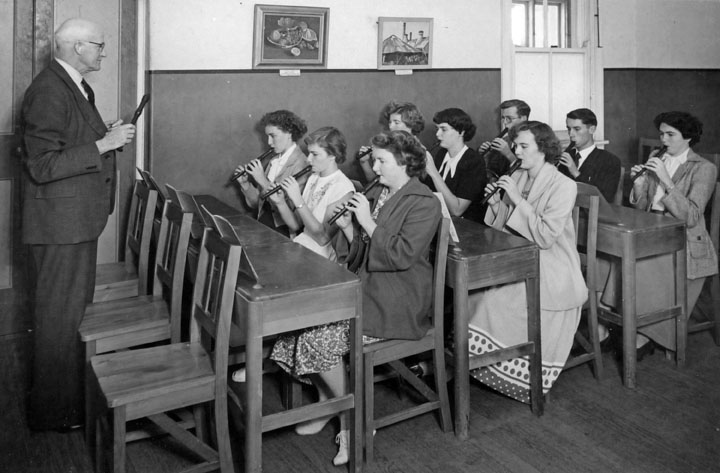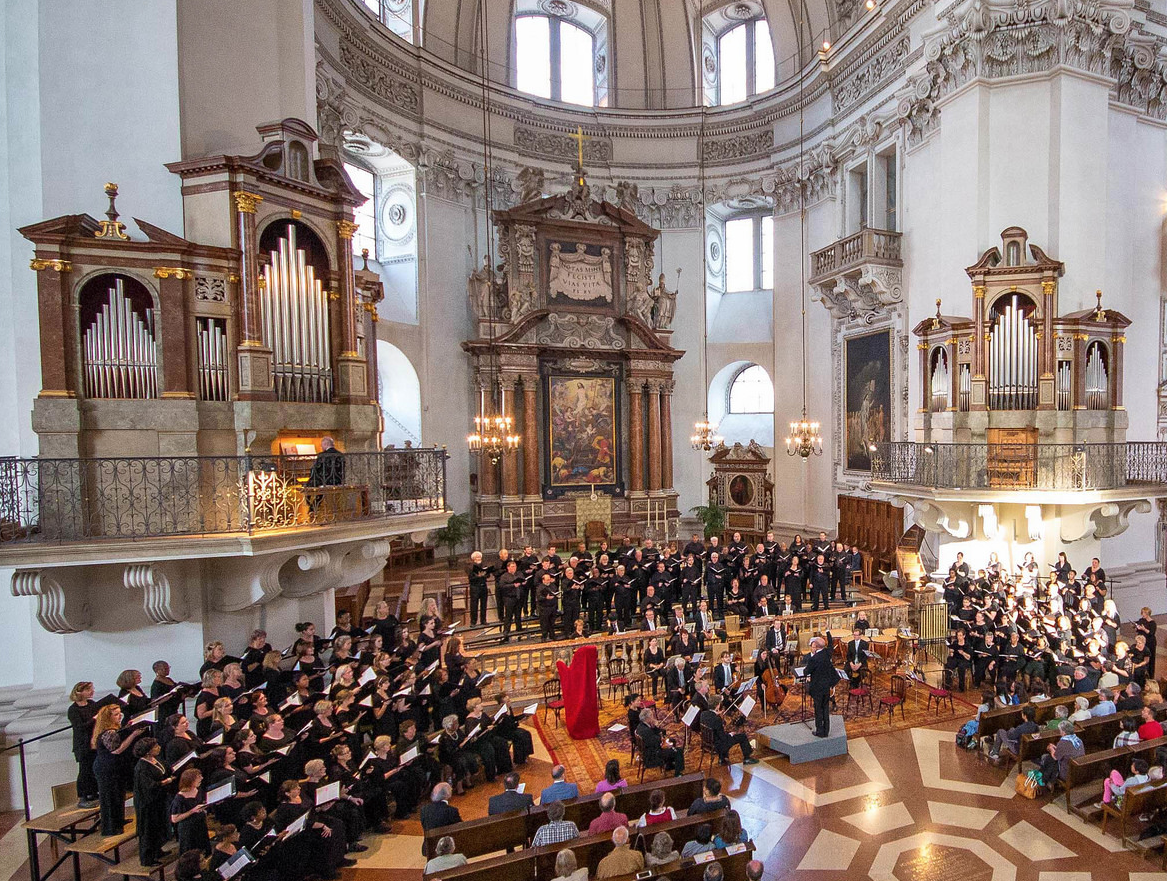 In third or fourth grade, depending on the curriculum of the school, classrooms of energetic, fidgety, over-excited students will be handed their first musical instrument: the recorder. The recorder can be distinguished by a distinct thumb-hole for the upper hand and seven finger-holes: The instrument was first documented in the Middle Ages, and while sometimes considered an amateur instrument, a range of illustrious composers including Handel, Vivaldi, and Leonard Bernstein have written pieces for the humble flute.
Recorders can either be wood or plastic. Wooden recorders range from inexpensive, to high-quality rosewood sopranos that can cost up to five hundred dollars. Anyone serious about playing the recorder would choose a nice wooden one, but in most classrooms, teachers go for the plastic option. Plus, plastic recorders are often more consistent in tone than a more expensive wooden flutes.
The way children experience sound is also a perfect match with the overtone-rich quality of the recorder.
While the sound is sweet, it notoriously a bit inescapable when handed out in droves to rooms of ten year olds. Some schools postpone the instrument for later introduction when students have a better understanding of music notation.
Why has recorder instruction become such a part of education in general?
Research shows that learning music notation directly correlates to the progression of cognitive abilities in academic subjects. Plus, musical notation while playing an instrument or singing is a cross-brain activity. This strengthens neural pathways. It even builds brain connections. As we age, the brain "prunes" as synapses begin eliminating as the major learning phase in our lives draws to a close. The neural pathways engineered as a child can be broadened through notation reading, strengthening connections to different areas of the brain.
The recorder is great for classroom learning because it both a solo instrument and ideal for a small number of players in various tones. The recorder is a great way to start teaching music seriously to students. It's also a great way to elicit real passion for music. Students see that music is not just something they listen to; it's something they can create with a simple instrument.
Learn about the Waldorf School's fascinating music education philosophy for grades 1-8.
Looking for materials?
Jennifer Mead's Teaching Program for Recorder.
NAfME's Creative Application in Soprano Recorder
In third or fourth grade, depending on the curriculum of the school, classrooms of energetic, fidgety, over-excited students will be handed their first musical instrument: the recorder. The recorder can be distinguished by a distinct thumb-hole for the upper hand and seven finger-holes: The instrument was first documented in the Middle Ages, and while sometimes considered an amateur instrument, a range of illustrious composers including Handel, Vivaldi, and Leonard Bernstein have written pieces for the humble flute.
Recorders can either be wood or plastic. Wooden recorders range from inexpensive, to high-quality rosewood sopranos that can cost up to five hundred dollars. Anyone serious about playing the recorder would choose a nice wooden one, but in most classrooms, teachers go for the plastic option. Plus, plastic recorders are often more consistent in tone than a more expensive wooden flutes.
The way children experience sound is also a perfect match with the overtone-rich quality of the recorder.
While the sound is sweet, it notoriously a bit inescapable when handed out in droves to rooms of ten year olds. Some schools postpone the instrument for later introduction when students have a better understanding of music notation.
Why has recorder instruction become such a part of education in general?
Research shows that learning music notation directly correlates to the progression of cognitive abilities in academic subjects. Plus, musical notation while playing an instrument or singing is a cross-brain activity. This strengthens neural pathways. It even builds brain connections. As we age, the brain "prunes" as synapses begin eliminating as the major learning phase in our lives draws to a close. The neural pathways engineered as a child can be broadened through notation reading, strengthening connections to different areas of the brain.
The recorder is great for classroom learning because it both a solo instrument and ideal for a small number of players in various tones. The recorder is a great way to start teaching music seriously to students. It's also a great way to elicit real passion for music. Students see that music is not just something they listen to; it's something they can create with a simple instrument.
Learn about the Waldorf School's fascinating music education philosophy for grades 1-8.
Looking for materials?
Jennifer Mead's Teaching Program for Recorder.
NAfME's Creative Application in Soprano Recorder Why Teaching the Recorder Matters
 In third or fourth grade, depending on the curriculum of the school, classrooms of energetic, fidgety, over-excited students will be handed their first musical instrument: the recorder. The recorder can be distinguished by a distinct thumb-hole for the upper hand and seven finger-holes: The instrument was first documented in the Middle Ages, and while sometimes considered an amateur instrument, a range of illustrious composers including Handel, Vivaldi, and Leonard Bernstein have written pieces for the humble flute.
Recorders can either be wood or plastic. Wooden recorders range from inexpensive, to high-quality rosewood sopranos that can cost up to five hundred dollars. Anyone serious about playing the recorder would choose a nice wooden one, but in most classrooms, teachers go for the plastic option. Plus, plastic recorders are often more consistent in tone than a more expensive wooden flutes.
The way children experience sound is also a perfect match with the overtone-rich quality of the recorder.
While the sound is sweet, it notoriously a bit inescapable when handed out in droves to rooms of ten year olds. Some schools postpone the instrument for later introduction when students have a better understanding of music notation.
Why has recorder instruction become such a part of education in general?
Research shows that learning music notation directly correlates to the progression of cognitive abilities in academic subjects. Plus, musical notation while playing an instrument or singing is a cross-brain activity. This strengthens neural pathways. It even builds brain connections. As we age, the brain "prunes" as synapses begin eliminating as the major learning phase in our lives draws to a close. The neural pathways engineered as a child can be broadened through notation reading, strengthening connections to different areas of the brain.
The recorder is great for classroom learning because it both a solo instrument and ideal for a small number of players in various tones. The recorder is a great way to start teaching music seriously to students. It's also a great way to elicit real passion for music. Students see that music is not just something they listen to; it's something they can create with a simple instrument.
Learn about the Waldorf School's fascinating music education philosophy for grades 1-8.
Looking for materials?
Jennifer Mead's Teaching Program for Recorder.
NAfME's Creative Application in Soprano Recorder
In third or fourth grade, depending on the curriculum of the school, classrooms of energetic, fidgety, over-excited students will be handed their first musical instrument: the recorder. The recorder can be distinguished by a distinct thumb-hole for the upper hand and seven finger-holes: The instrument was first documented in the Middle Ages, and while sometimes considered an amateur instrument, a range of illustrious composers including Handel, Vivaldi, and Leonard Bernstein have written pieces for the humble flute.
Recorders can either be wood or plastic. Wooden recorders range from inexpensive, to high-quality rosewood sopranos that can cost up to five hundred dollars. Anyone serious about playing the recorder would choose a nice wooden one, but in most classrooms, teachers go for the plastic option. Plus, plastic recorders are often more consistent in tone than a more expensive wooden flutes.
The way children experience sound is also a perfect match with the overtone-rich quality of the recorder.
While the sound is sweet, it notoriously a bit inescapable when handed out in droves to rooms of ten year olds. Some schools postpone the instrument for later introduction when students have a better understanding of music notation.
Why has recorder instruction become such a part of education in general?
Research shows that learning music notation directly correlates to the progression of cognitive abilities in academic subjects. Plus, musical notation while playing an instrument or singing is a cross-brain activity. This strengthens neural pathways. It even builds brain connections. As we age, the brain "prunes" as synapses begin eliminating as the major learning phase in our lives draws to a close. The neural pathways engineered as a child can be broadened through notation reading, strengthening connections to different areas of the brain.
The recorder is great for classroom learning because it both a solo instrument and ideal for a small number of players in various tones. The recorder is a great way to start teaching music seriously to students. It's also a great way to elicit real passion for music. Students see that music is not just something they listen to; it's something they can create with a simple instrument.
Learn about the Waldorf School's fascinating music education philosophy for grades 1-8.
Looking for materials?
Jennifer Mead's Teaching Program for Recorder.
NAfME's Creative Application in Soprano Recorder 